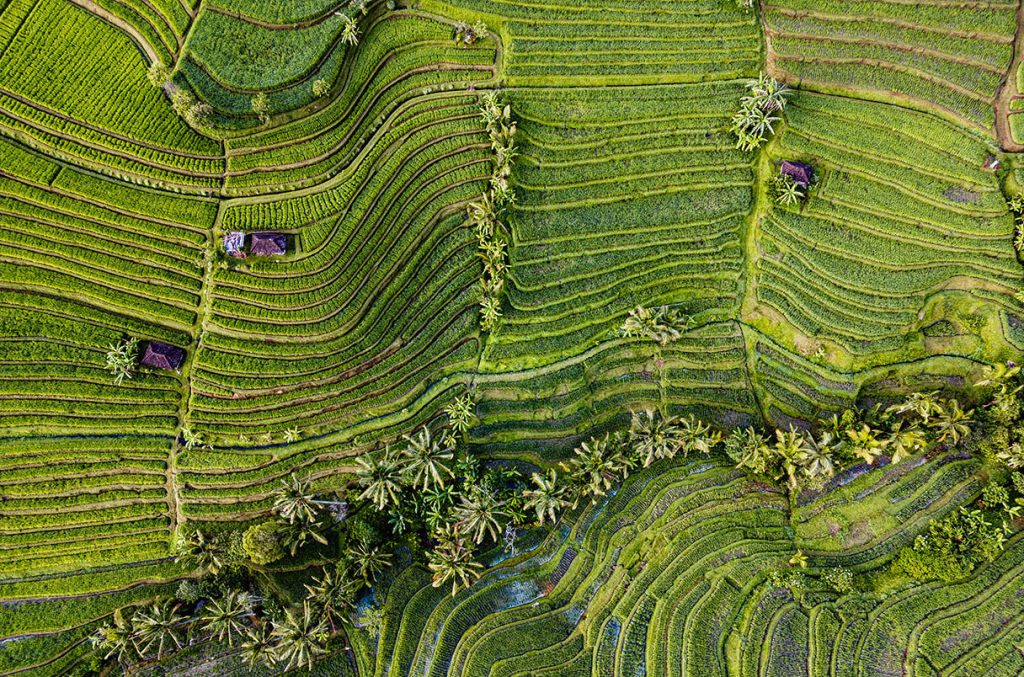Tags
Is Indonesia’s planned rice megaproject doomed to fail?
Poor soils and dry climate could undermine effort to expand rice growing by 1 million hectares, experts warn.
By Dyna Rochmyaningsih

In the swampy forests of Indonesian New Guinea, “food brigades” of soldiers are guarding bulldozers as they clear vegetation for future rice fields. The operation is part of an initiative announced late last year by Indonesian President Prabowo Subianto to create 1 million hectares of new rice farms in the Merauke Regency, a region at the far eastern end of Indonesia’s sprawling archipelago. The country’s 281 million people, who will consume more than 30 million tons of rice this year, need more production, the government asserts. “Food is a matter of our nation’s survival,” Subianto said in February.
But many soil scientists and agricultural researchers predict the effort could become the latest in a series of disastrous farming megaprojects launched by Indonesia’s leaders over the past few decades. Merauke’s soils and relatively dry climate are poorly suited to growing rice, they say. They fear the project, covering an area the size of Jamaica, could lead to dry, degraded landscapes that are vulnerable to wildfires—and harm Merauke’s Indigenous people. So far, however, government officials have had “their eyes and ears closed to all criticism from scientists,” says anthropologist Laksmi Adriani of Yayasan Pusaka Bentala Rakyat, a nonprofit that advocates for Indigenous rights.
The rice project is rooted in a pledge by Subianto, a former general who took office in October 2024, to make Indonesia self-sufficient in food production within 4 years. In particular, his administration is trying to compensate for the loss of farmland to development on Java, Indonesia’s most populated island, by rapidly adding 3 million hectares of cropland across the nation. In New Guinea, Indonesia’s military is helping a firm owned by the brother of Subianto’s agriculture minister clear the land; it’s not clear who the farmers would be.
To many researchers, Subianto’s initiative is reminiscent of past failed megaprojects. In the 1990s, they note, then-President Soeharto moved to convert 1 million hectares of wet peatland forests in Central Kalimantan on the island of Borneo to rice paddies. But draining the wetlands exposed soils rich in the mineral pyrite to air, enabling chemical reactions that produced sulfuric acid. The soils became too acidic to support economically viable rice farming, says Dwi Andreas, a soil scientist at Bogor Agricultural University. Then, beginning in the late 1990s, many of the cleared areas were abandoned. Many of the dry, shrub-covered plots then burned, as a result of both El Niño–induced drought and intentional fires set by firms eager to plant oil palm plantations. The smoke threatened the health of millions in Indonesia and neighboring countries and released billions of tons of planet-warming carbon.
A similar failure has unfolded in North Sumatra, where in 2020 then-President Joko Widodo rapidly expanded onion and potato farming as part of a food sovereignty project. Even before the project started, soil scientist Budiman Minasny of the University of Sydney warned that region’s hard and acidic soils, which originated from the Toba supervolcano eruption some 75,000 years ago, were unsuitable for agriculture. Farmers have now abandoned 90% of the fields, local media recently reported.
The government now risks repeating these mistakes, researchers say. Officials haven’t said exactly where they plan to grow rice in 4.6-million-hectare Merauke, but early signs suggest they are targeting vulnerable soils. Using satellite imagery, landscape ecologist David Gaveau of TreeMap, a company that monitors land-use change in Southeast Asia, found that workers have recently cleared 4200 hectares near a village called Wanam. It lies along a 135-kilometer-long “food estate road” being built by Indonesia’s Ministry of Defense. Geologic maps show the road slices into “older swamp deposits,” according to a scientist at the National Research and Innovation Agency who asked to remain anonymous.
That’s worrying, scientists say, because it means that, as on Borneo in the 1990s, the cleared soils could become acidic. So far, however, the government has not released any technical review of Merauke’s soils or whether they will support rice, says soil scientist Wirastuti Widyatmanti of Gadjah Mada University.
Rice failure redux?
Researchers fear poor soils and a relatively dry climate could doom an Indonesian government plan to dramatically expand rice growing in Merauke, Indonesia. They note similar past efforts to expand crop production in Central Kalimantan and North Sumatra ended in failure.

Indonesian Minister of Agriculture Amran Sulaiman has said the government will, if necessary, plant new rice varieties to deal with acidic soils. But Andreas is skeptical. In Central Kalimantan, he tested 12 rice varieties in soils similar to Merauke’s, and all fared poorly. He suspects rice farmers would need to add large quantities of costly lime fertilizer to their paddies to neutralize soil acidity. As a result, “farmers will get no profit at all,” Andreas predicts. And if paddies are abandoned, Gaveau says the region’s relatively dry climate means “more fires will likely come in the future.”
This isn’t the first time the Indonesian government has tried to expand rice farming in Merauke. In 2010, then-President Susilo Bambang Yudhoyono launched an effort to clear tens of thousands of hectares of land for rice. That project also failed, Adriani notes. It destroyed forests that Indigenous Papuans relied on for hunting and gathering, and—far from bringing abundance—led to an increase in childhood malnutrition. Now, she fears Subianto’s rice initiative will only make matters worse.
https://www.science.org/content/article/indonesia-s-planned-rice-megaproject-doomed-failPublished Date: April 4, 2025






